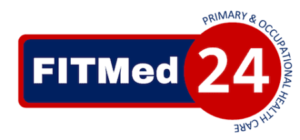Over the years, there has been a growing acceptance on the part of employers within selected sectors of industry, that it may be wise to evaluate the fitness of manual workers before granting them employment. However, the importance of conducting exit medicals at the time that a worker may be leaving their employ, whether voluntarily, or as a result of dismissals, has tended to arouse rather less attention from management.
Professional Exit Medicals are Important to Both Workers and Management
Much of this apparent indifference was originally due to a lack of legislation, but with the introduction of a compulsory programme of medical surveillance for workers in the mining sector, there is hope for more widespread compliance. Medical surveillance has subsequently been extended to include any workers who are required to operate in conditions of excessive noise, in the presence of high levels of lead or asbestos, or who may be at risk due to exposure to certain chemical substances or biological agents.
The objective of surveillance is twofold. On the one hand, it is intended as a means with which to monitor and to protect the health of workers who operate in hazardous environments and, on the other hand, to ensure that employers are protected against spurious compensation claims for work-related illnesses. The programme includes pre-employment, periodic and exit medicals. The first medicals determine the fitness of new workers to undertake the tasks required and establish a baseline for future comparisons. Intermediate examinations ensure that the health of each worker is maintained and will detect any early signs of a work-related condition, while the latter establishes the state of the worker’s health at the time of resignation or dismissal.
Because both the physical demands of the job and the nature of the attendant hazards tend to vary between one workplace and the next, the particular examinations and tests that may be included in these surveillance programmes also vary. They do, however, include a number of standard procedures, such as a full medical examination, the measurement of pulse and blood pressure, and urine screening tests. Over and above these, specific tests such as lung function, audiometry and vision testing, as well as X-rays, ECG and any blood chemistry, haematology or microbiological investigation that may be seen as appropriate.
Submitting to exit medicals and the other examination is not optional for workers in industries where operating a medical surveillance programme is compulsory. An employer is only required to make this clear and to ensure that each employee understands what he or she can expect during this examination, and how important they are to his or her health. These examinations can, however, only be conducted by registered medical practitioners and nurses who also hold a formal qualification in occupation health.
While it remains a fact that not all industries are compelled to adopt surveillance programmes, the benefits of maintaining a healthy workforce are prompting a growing number of concerned employers to introduce staff medicals voluntarily. FITMed24 operates a team of certified occupational health professionals providing services to companies both with and without compulsory medical surveillance programmes. We offer our clients a choice between conducting them at our clinic premises or utilising one of our mobile units to conduct them on-site, where this may be more convenient.
Recent Posts
The Importance of a Hygiene Survey in the Workplace: A South African Perspective
In the South African workplace environment, the health and safety of employees are paramount. With a diverse range of industries—from mining and manufacturing to agriculture and services—ensuring...
In today’s competitive business landscape, many companies view employee medicals as a necessary expense a grudge buy. However, this perception is changing as more organizations recognize the...
